Panorama Is Skiing’s #LifeHack
Actually so is all of B.C. outside of Whistler

Colorado is over. Utah is over. Tahoe is over. America racks 60 million skier visits per winter and nearly half of them are in these three places and probably 90 percent of these are at 20 ski areas. I don’t need to name them because you know them because everyone knows them. Even your aunt Joan who chain smokes Virginia Slims and still records her soap operas on VHS and hasn’t left Kentucky since 1973 and names her plants and has never skied and won’t because she’s “afraid of breakin’ somethin’” though apparently her lungs are crafted from adamantium knows what Vail is.
American skiing’s not over but mostly it is. Oregon and Washington? Forget it. Too many people, not enough ski areas, nowhere to stay on the hill anyway. We have to consider the environment you know and buildings even thoughtfully and densely constructed would be a catastrophe unlike the floating traffic jam known as US 2 when 5,000 Epic Pass holders migrate up to Stevens Pass every Saturday morning.
There is one low-crowd, big-mountain American ski alternative but you wouldn’t like it. Montana and Idaho are stuffed with 2,000-acre ski areas so empty you can ski onto the lift all day even when the pow’s stacked up to your roofrack. But they’re far from everyone and everything and the chairlifts are old and slow and none of them are on your Ultimate Powder Monster Ski Passport so you’ll have to pay $45 cash for a lift ticket and we just can’t be throwing money around like that and who at this point can even remember their ATM pin code?
But if you want the hack here’s the hack: Canada. Up North yonder. I know it sounds crazy but they still build things up there. An outrage! Here in U.S. America we fight housing like we’re invading Iwo Jima and push the timeline on what should be a simple village development out to decades and make sure it can house one-third as many people as initially proposed which was already 90 percent less than what we needed and celebrate our ability to get nothing done like we’d just invented the lightbulb. But in British Columbia the government decided 30 or so years ago to clear bureaucratic obstacles so that small ski areas could become large ski areas with high-speed lifts and large trail footprints and lodging tucked against the mountain and what do you know: the province has sprouted nine ski areas nearly the size of Keystone and just as nice. But not just as crowded. Because with the exception of Whistler which is also over no one skis in British Columbia.
So for Presidents Week 2025, my family went there.
Panorama
Every mainline resort in Colorado and Utah and California runs multiple superlifts out of its base and by 9:30 in the morning or earlier on powder days their cereal-box-maze lift queues are jammed like salmon runs. “Those pictures you see on social media all clear up later on,” the resort people tell us. But here is what the liftline looks like at Panorama’s main out-of-base mover at 9:10 a.m. on a holiday-week Wednesday:
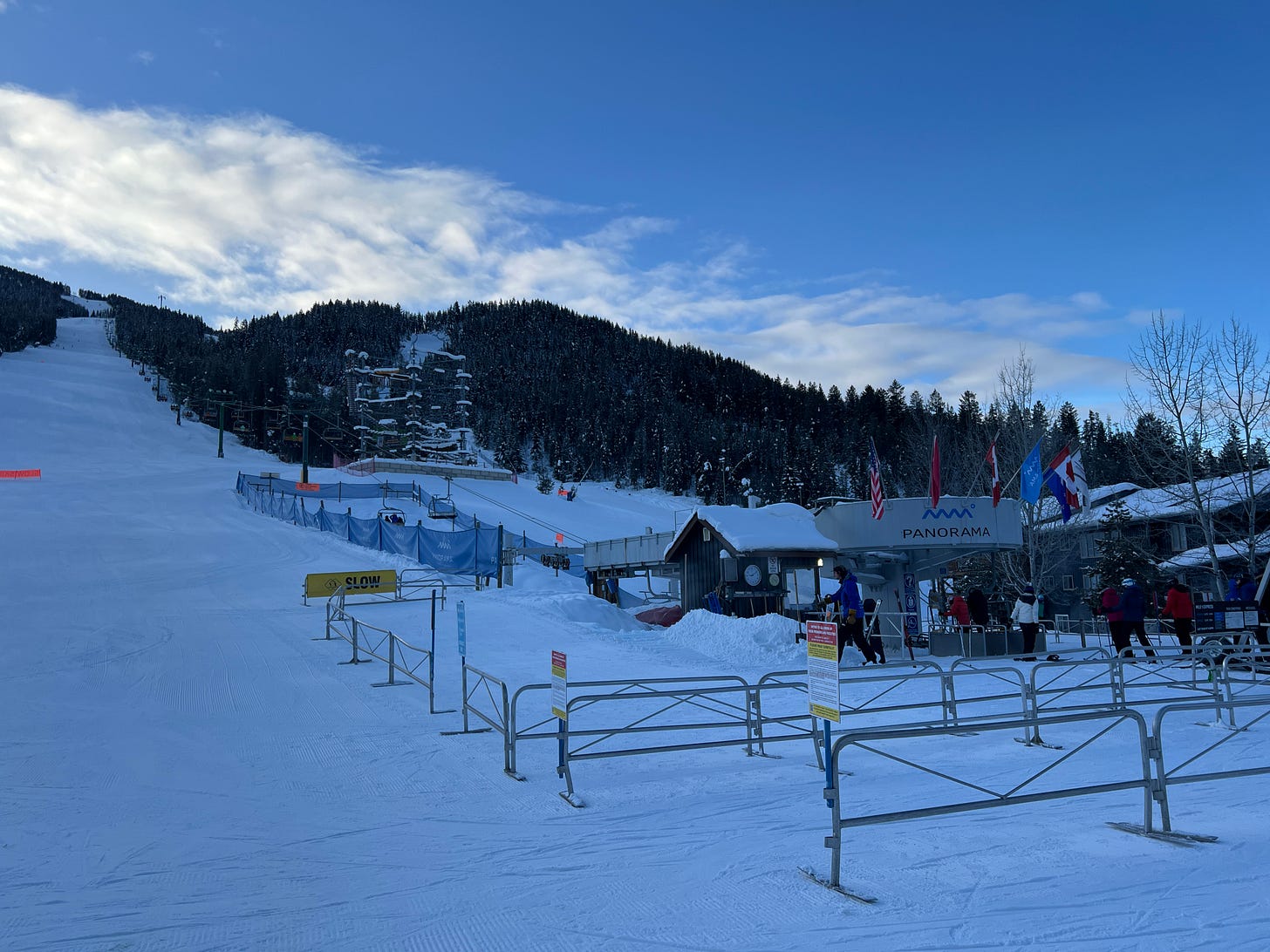
It was like this every day. Even Saturday. Maybe two or three or a half-dozen chairs is all I ever waited. For this:
Inside was no different and all week we never waited for a table at lunch or dinner.
Stats to stop ignoring
B.C. holds: five of North America’s top 12 vertical drops; eight of the continent’s 25 snowiest ski areas; and seven of its 26 largest. Most of the biggest participate in a U.S.-based multimountain pass. The five tallest by vert have all joined Epic, Ikon, and/or Mountain Collective (Canadian resorts in yellow):
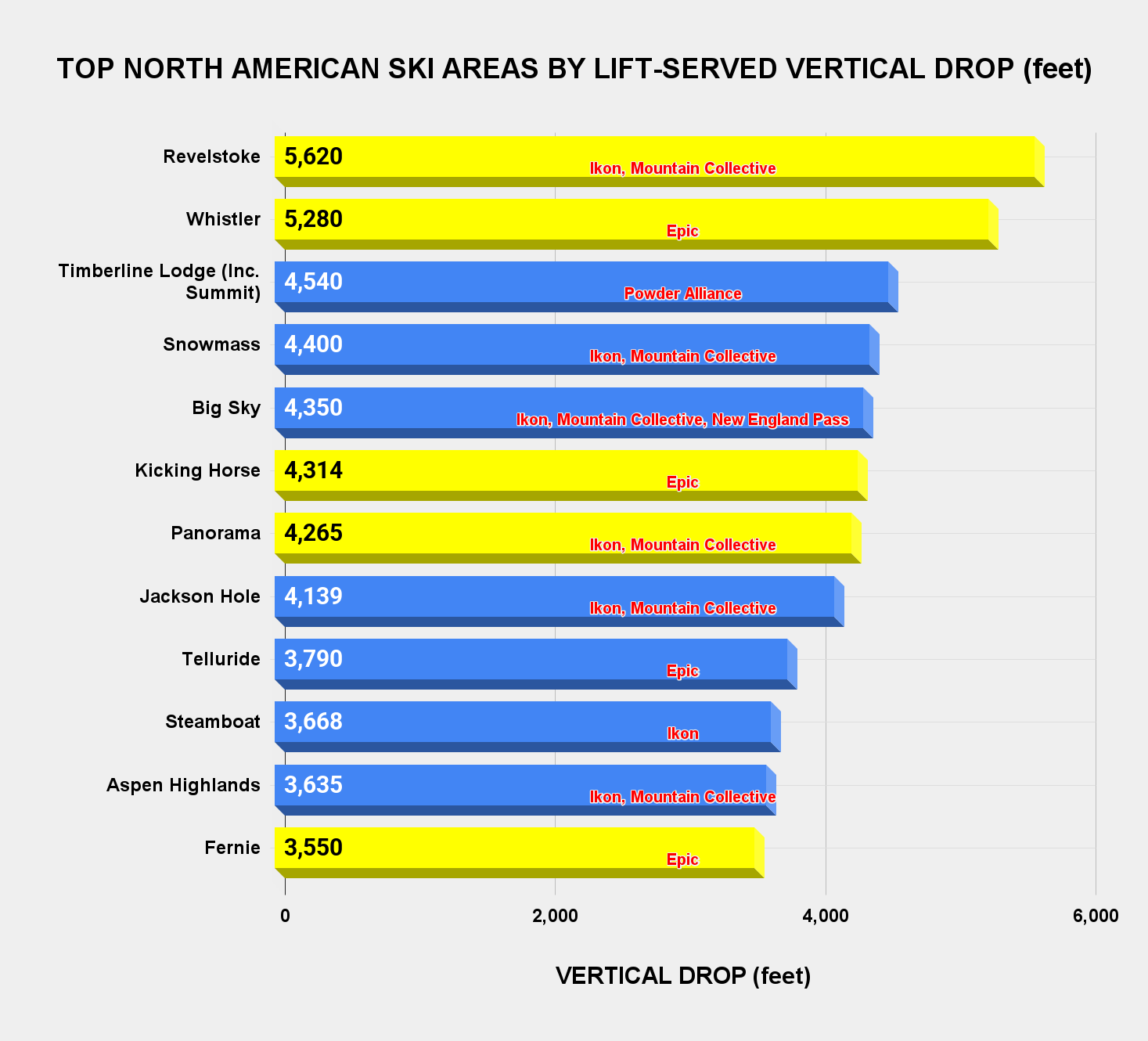
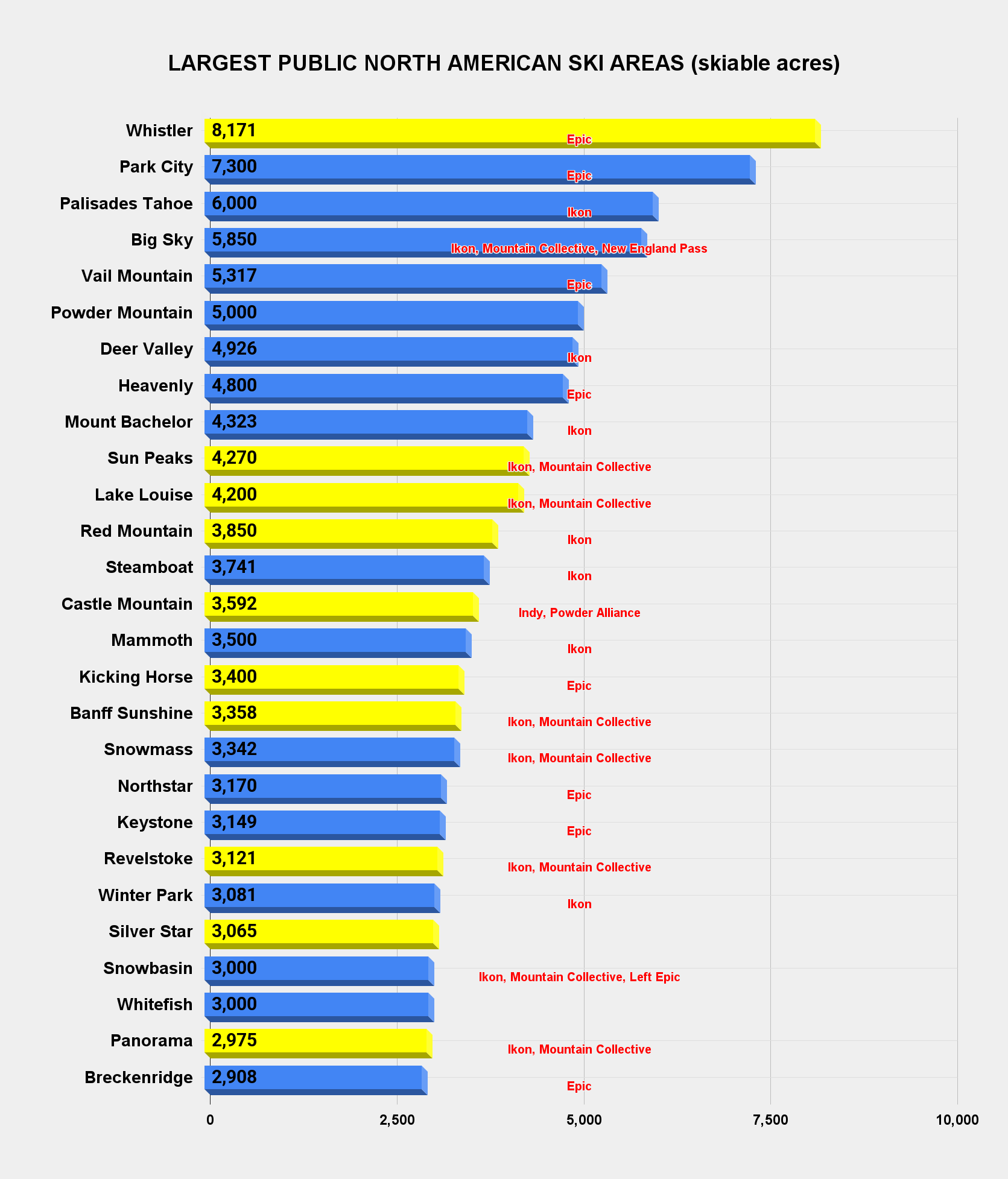
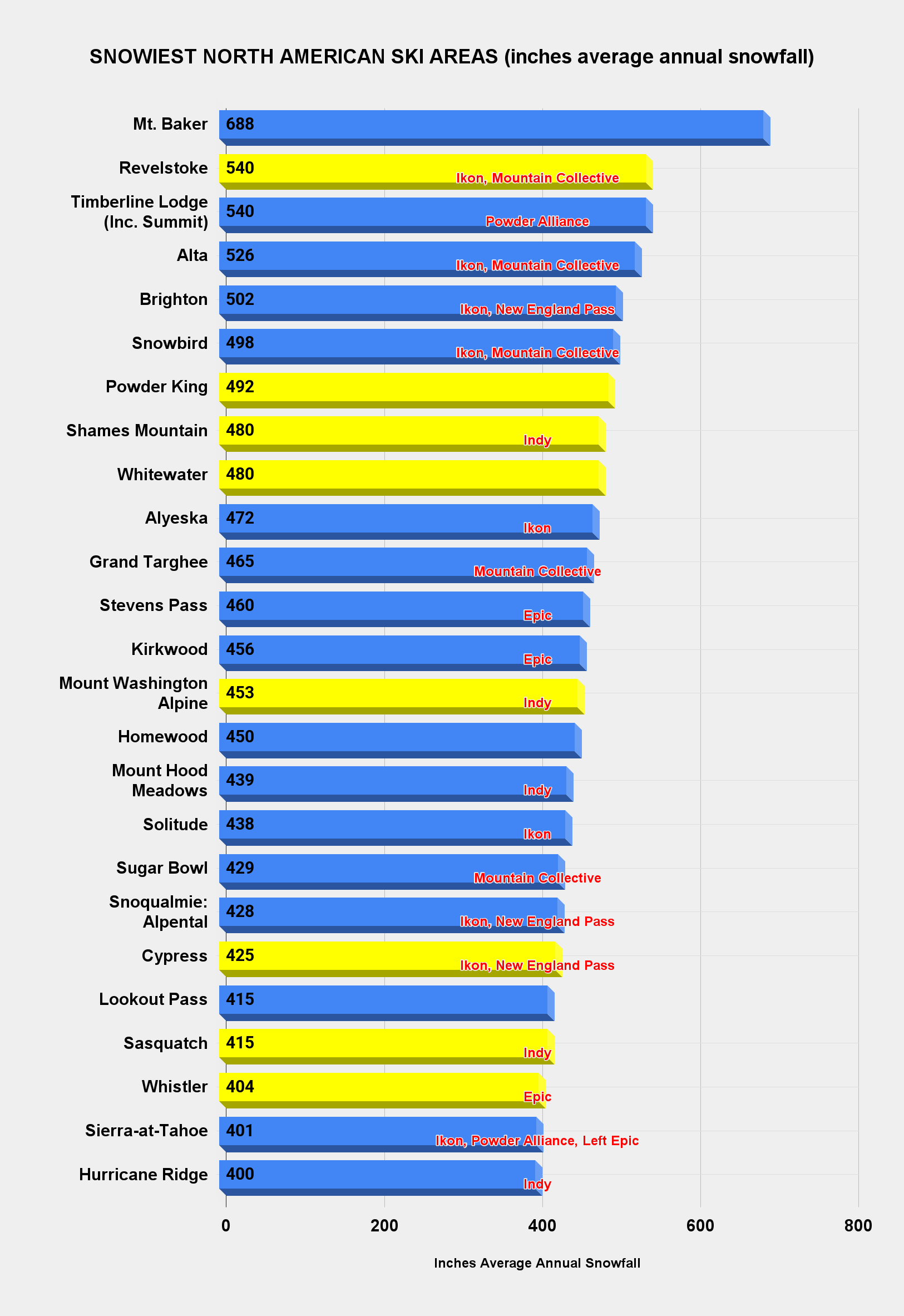
Most of these statistical monsters thrust from interior B.C. and sit alongside or adjacent to the Powder Highway, a ring of federal and provincial roads that are exactly what they sound like: a paved delivery systems to Canada’s best and most consistent skiing.
B.C. is approximately the size of Colorado, California, and Utah combined. The province records six or seven million annual skier visits, a whisper beside those three states’ 28-ish million annual skier days. Whistler, coastal, enormous, seated alongside a mainline highway straight north of the international border, claims roughly one-third of those visits. Americans, on average, account for just 13 to 15 percent of British Columbia’s total skier days. So fewer than one million.
Why? I don’t know. Canada is easy. There is no language barrier. The currency exchange rate has favored the United States for decades. The resorts deploy the same signage and trail ratings as American ski areas. The people are nice. Everyone uses the safety bar. Yes they are mad at us right now. But I am not part of all that, Canada. I come in peace. And I come to bring you American snosportskiers and their strange green money.
Panoramic Panorama
Panorama stands 4,265 vertical feet above the valley floor. The summit, a low-by-Western-standards 7,759 feet (sorry, 2,365 meters, whatever that means), is one of the most glorious in North American skiing, with outlandish views of the Purcells:
The view from the top of Panorama’s Summit lift. Video by Stuart Winchester.
There is no direct route to the top. Three lift rides, not all high-speed. It takes a while. Down is different. Down glides. Swoops and rolls and dives. Groomers everywhere. Just dripping off all sides. Like fudge runnels rolling off an ice cream sundae. Glorious, fast, endless. Sun Bowl especially. Tree-dotted meadows galloping across the lower-right-hand flare of Pano’s bell-shaped trailweb.
Unfortunately I don’t really like skiing groomers. Mostly because I am not very good at it, at least if it’s not a) still morning cord, b) butter-softened by sun or temps, or, c) snowing heavily. By 11-ish even on an uncrowded megabump like Pano the masses have windshield-wipered away the toplayer like a six-year-old biting the top off a cupcake and saying, “you want the rest?” And no not really jerks.
What I like is a puzzle: long, complicated, tree- and feature-laden off-piste zones that baffle the body and the brain. Steep is fine in bursts but a moderate pitch is better. Technical but not too technical – no hyper-narrow chutes or mandatory airs please. Challenging but with options and bailouts. And that pretty much describes the vast double-diamond zones off Pano’s summit, Taynton Bowl and Extreme Dream.
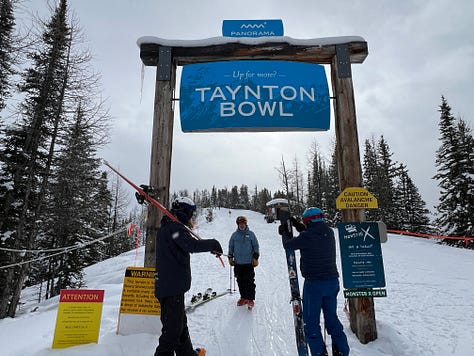
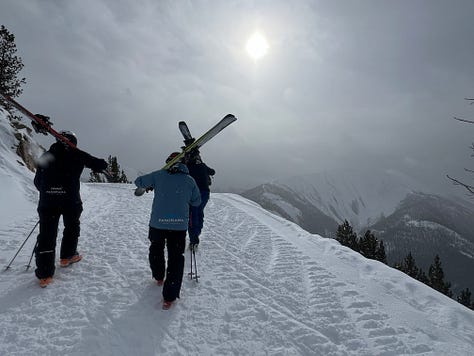
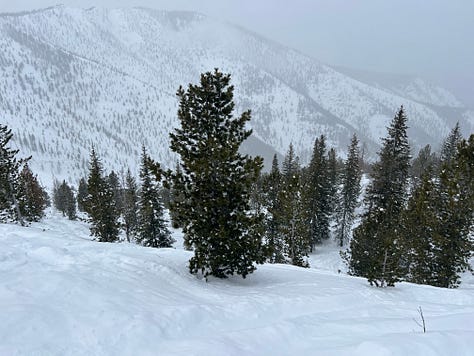
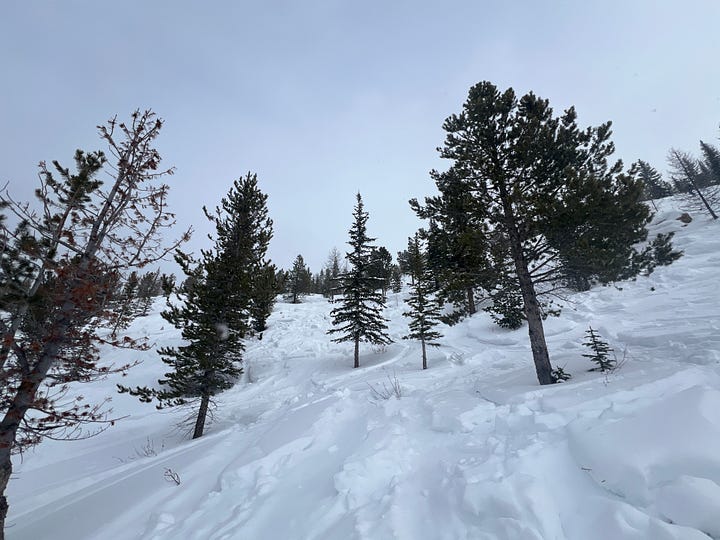
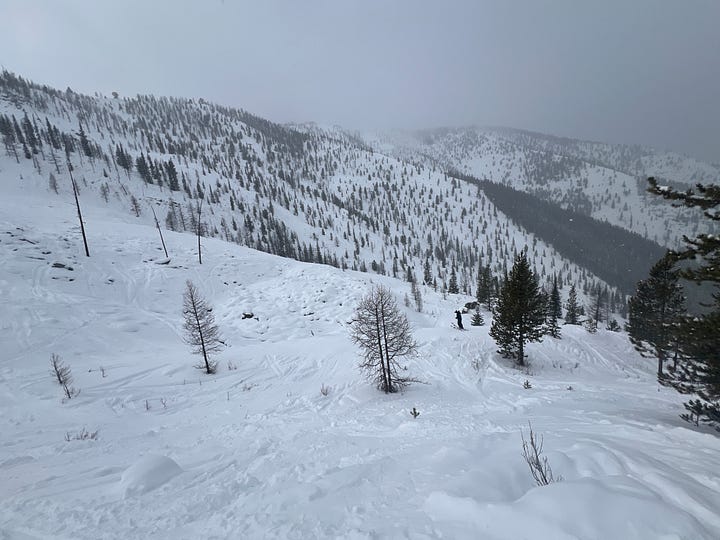
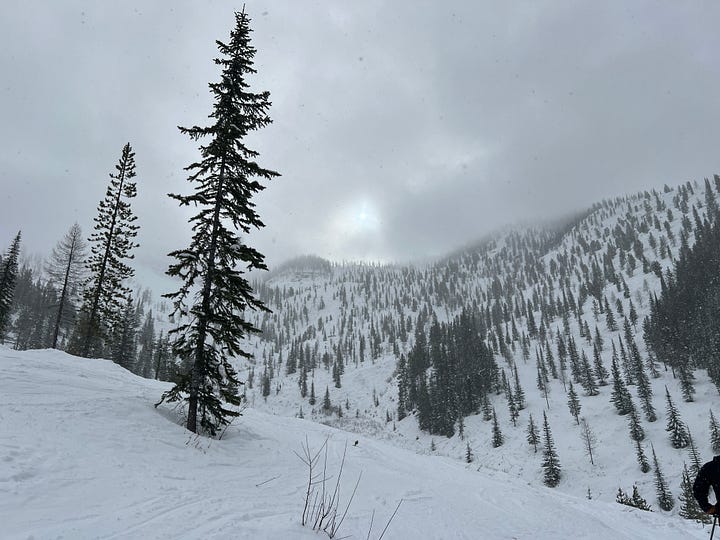
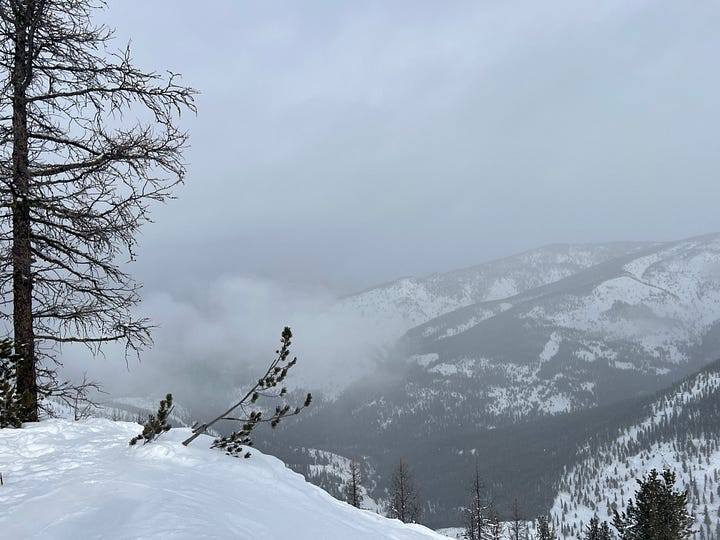
Drop directly into Extreme – which is steep but not terribly extreme – off the summit. Taynton lies through a gate skier’s right off the Summit Quad (skier’s left facing downhill), which is the opposite direction of what’s suggested on the James Niehues trailmap, making it both a design masterpiece and slightly confusing. Through the gate, skiers pole and skate and sometimes hike a cirque trail. Drop off anytime into steep gladed labyrinths. Or keep going to the cats, which require an additional single-ride ticket:

From there, infinite ways down. The terrain, steep but manageable, knolled and layered and complex, completely ungroomed, echoes Highland Bowl at Aspen Highlands or Catherine’s at Alta – a slight pain in the ass to access, but probably the best runs of your trip.
For all the vastness, everything funnels back to one base. It’s impossible to get lost at Panorama. For families seeking a big-mountain alternative to the crowded and confusing American Rockies, to the multiple base areas of Breck or Park City or Palisades or Big Sky, Pano is about as simple and appealing a destination as you can find in North America.
Unfortunately, that strength underscores one of Panorama’s biggest weaknesses: a pinched lift system that rarely seems to drop you exactly where you want to be and offers few compelling lappable trailpods. Sun Bowl offers some of the best intermediate terrain anywhere, but repeats require two lift rides with long traverses top and bottom. The excellent Founder’s Ridge terrain is similarly cloistered – if you can even find it. A lap off Taynton can eat up an hour-plus, especially if you add the cat ride onto the three-lift journey to the top.
Panorama’s other big shortcoming is relatively low snowfall for its neighborhood. This is the Keystone or the Sun Valley of British Columbia, nibbling on an average of 204 inches (518 centimeters) of annual snowfall, while Fernie, to the south, scores nearly double that, and Kicking Horse, to the north, checks in closer to 300. And Revelstoke’s 540 embarrasses them all.
But Pano gives you plenty. Unlike many of the top U.S. destinations, everything in B.C. has remained on Ikon Base (with holiday blackouts). No reservations required. Panorama, Revelstoke, and Sun Peaks are also on Mountain Collective (Red is Ikon-exclusive). Pano sits high off the valley floor three-and-a-half hours (in good weather) west of Calgary airport. The gorgeous Banff trio – also on Ikon – sits roughly halfway between, and they make a nice combo safari. You can also start in the U.S. from 49 Degrees North, Washington (Indy); Schweitzer, Idaho (Ikon); or Whitefish (no pass, but $110 max lift ticket last season), and stomp your way north beginning at Red (Ikon) or Fernie (Epic) as first Canadian stops. The only major interior B.C. ski areas without a U.S. pass affiliation are ungodly snowy and dirt-cheap Whitewater and Powdr-owned (but for sale) monster Silver Star.
Fairmont Hot Springs
The rapid-fire hoparound trips, where I fly across the continent and ski six mountains in four days, are generally solo runs. #FamilySkiing is generally a set-up-and-chill occasion. But we did work in a half day at Fairmont Hot Springs, an Indy Pass thousand-footer 40 easy minutes south of Pano.
And damn. Not the skiing, which is unremarkable. But the views:

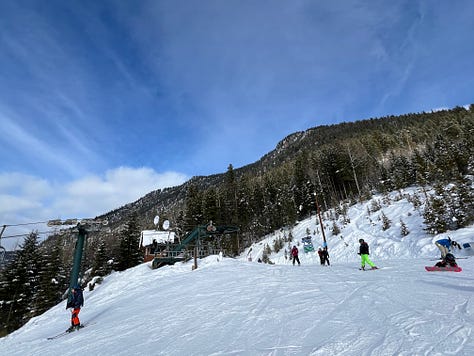
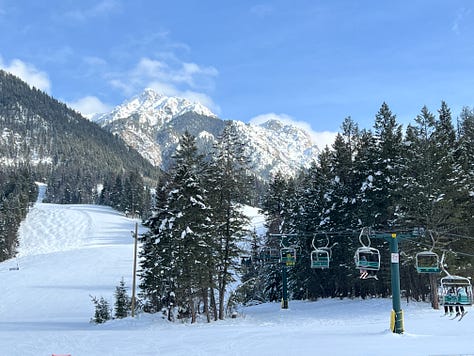

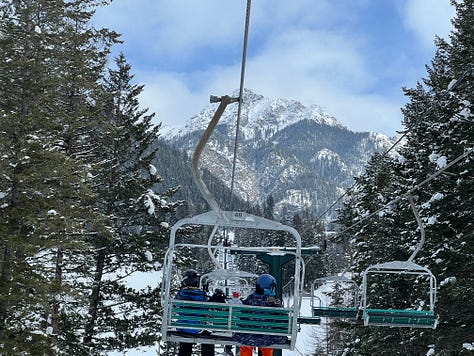
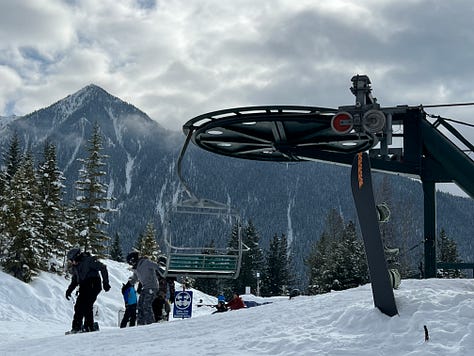
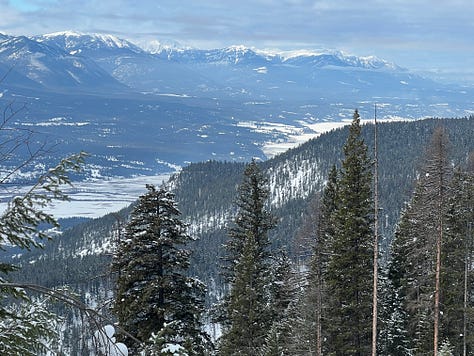
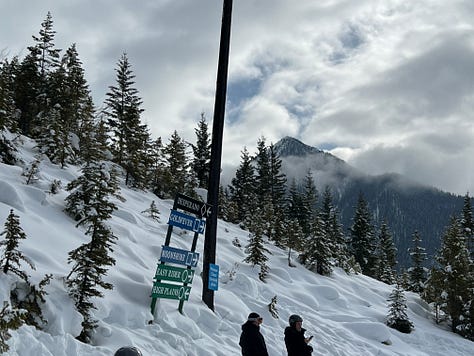
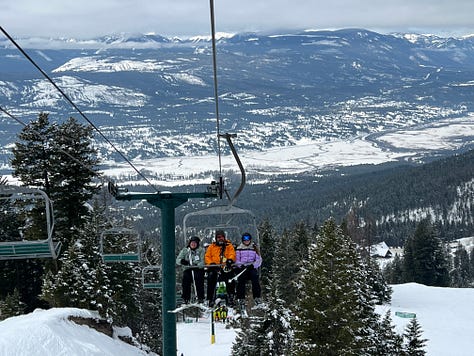
This being B.C., Fairmont is the sort of ski area that could, like Kicking Horse or Revy or Sun Peaks, morph into a megaresort in the space of a decade. For now, it’s a family ski area with destination scenery. I skied with my son and my nephew. The mountain spins one base-to-summit triple chair and some beginner surface machines. A couple steep bumpers cut through the center of the trailmap.
The hot springs – free with the day’s lift ticket – wait on the way back down the access road. They were a bit crowded and industrial for my liking, but I’m a water grinch about 80 percent of the time, so ignore me.
Slopes bunches your ski days by trip, by season, and all time. Here’s the recap of my four-day B.C. run:
The Storm teamed up with Slopes to document my 2024-25 ski season. Check out previous trip reports:


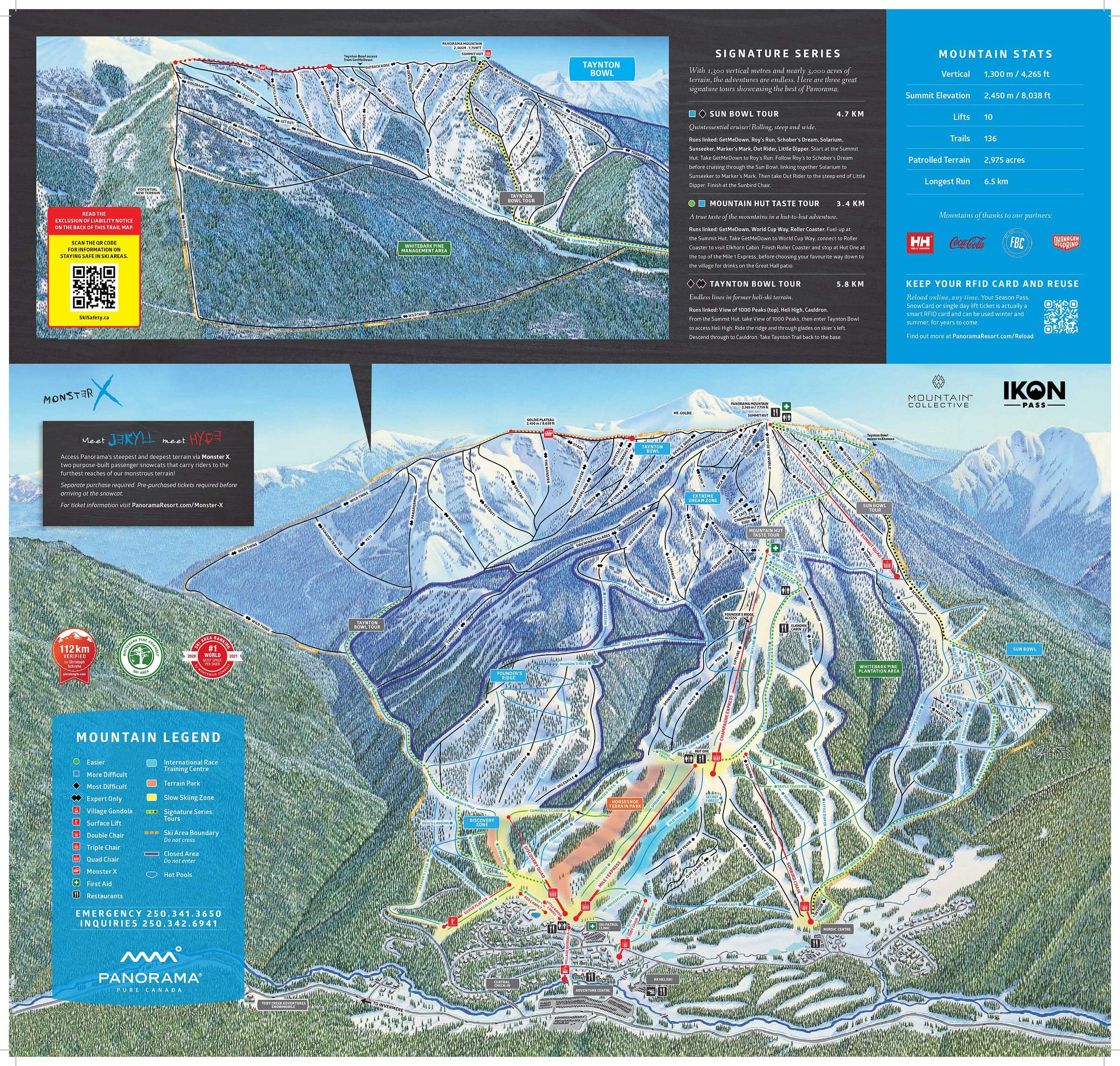
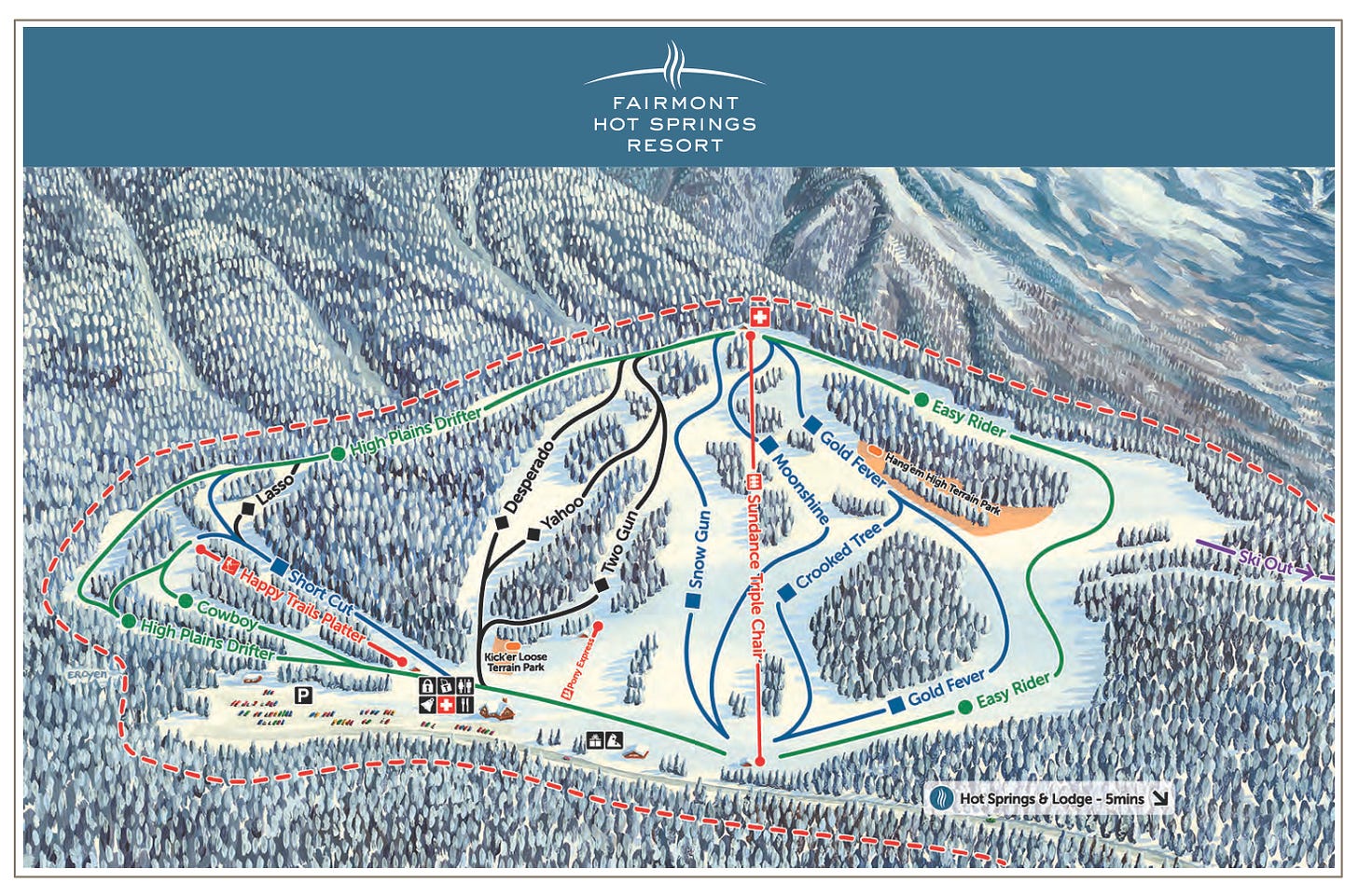
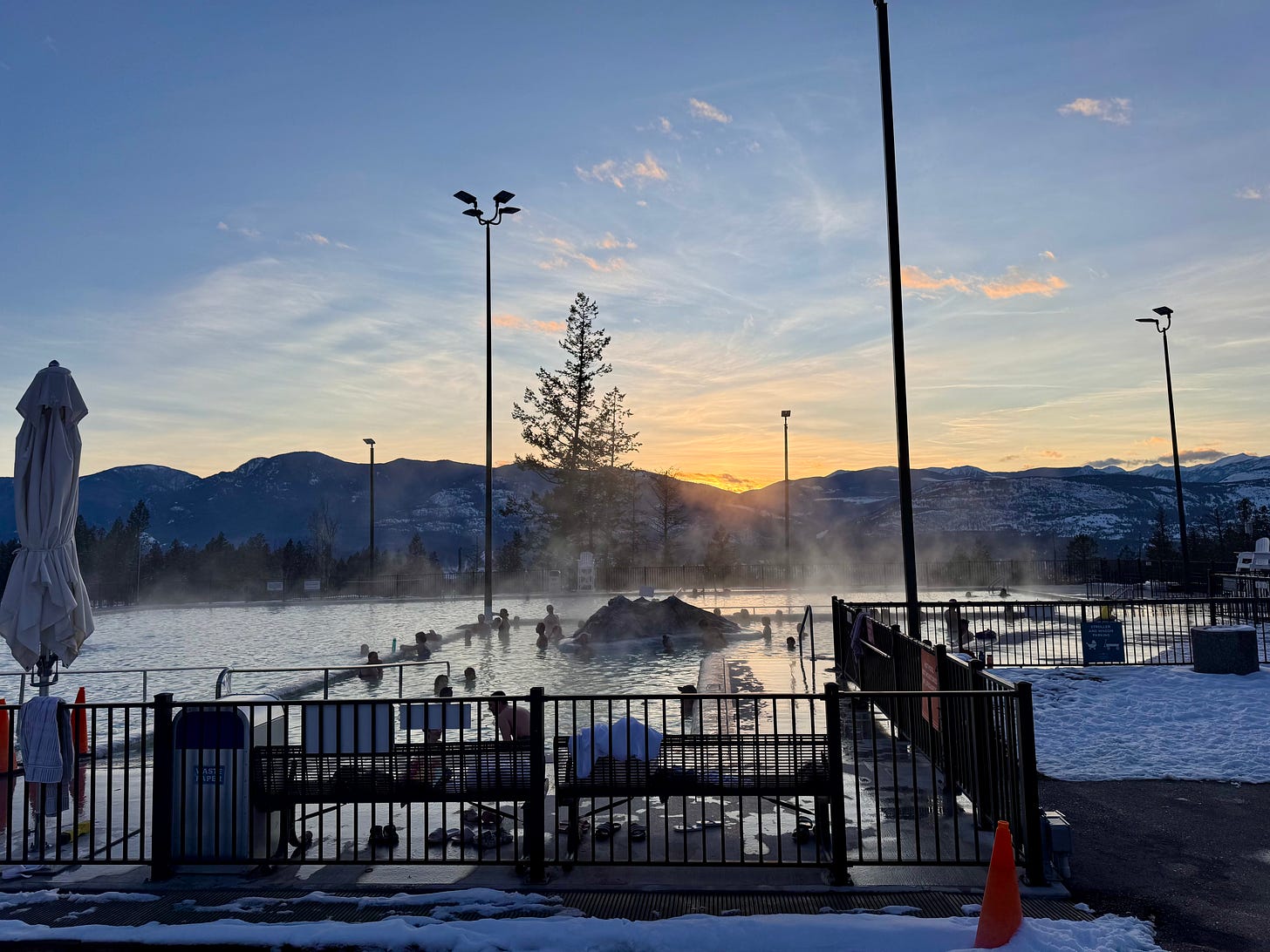
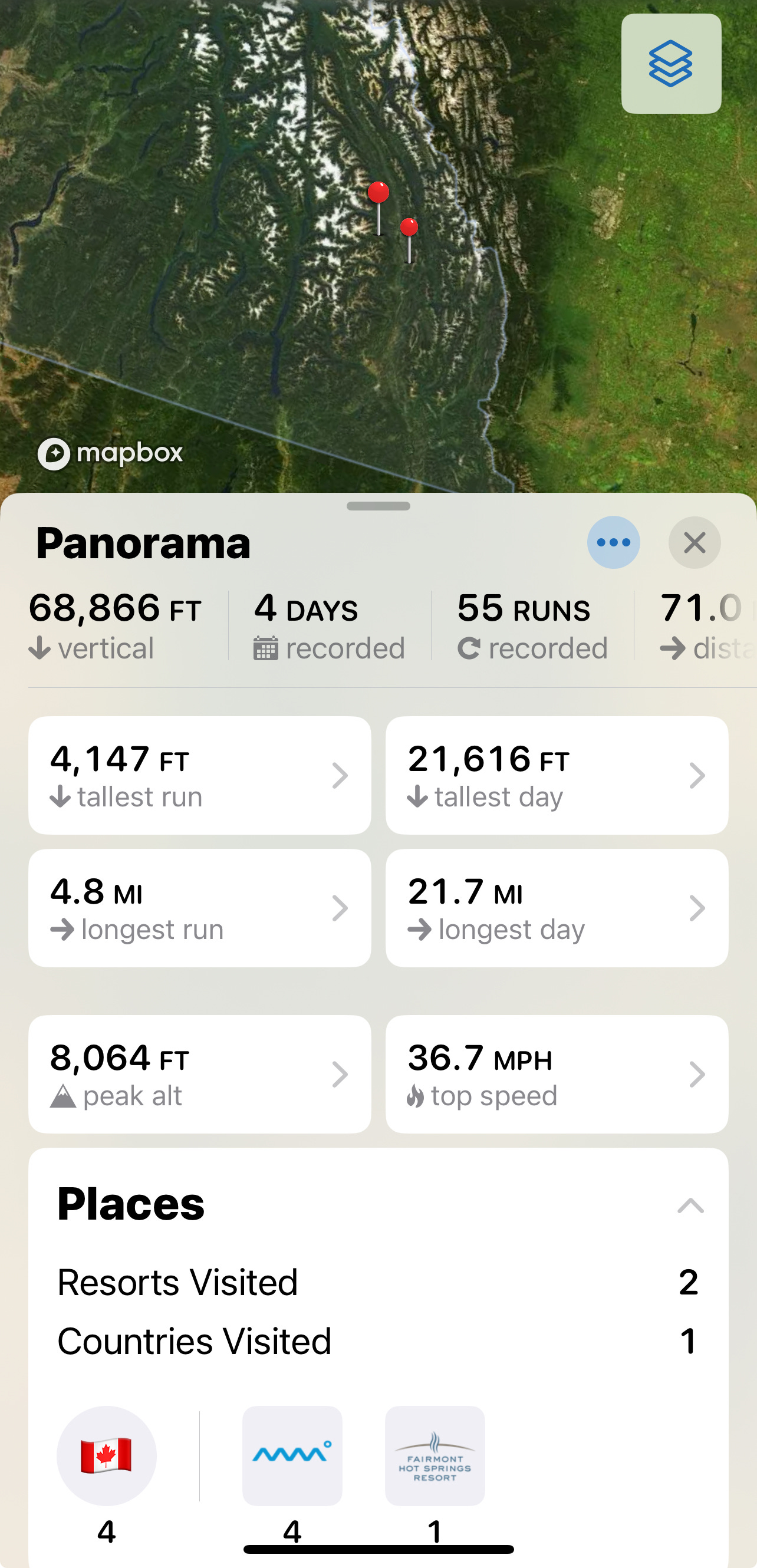
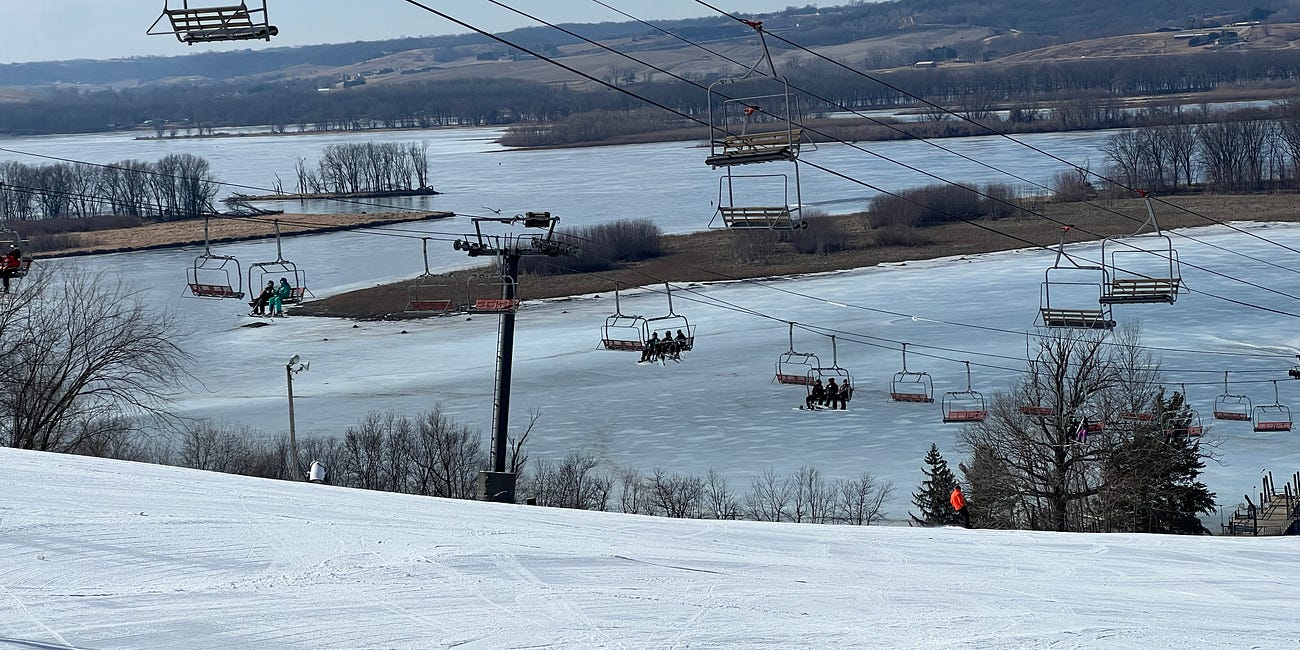
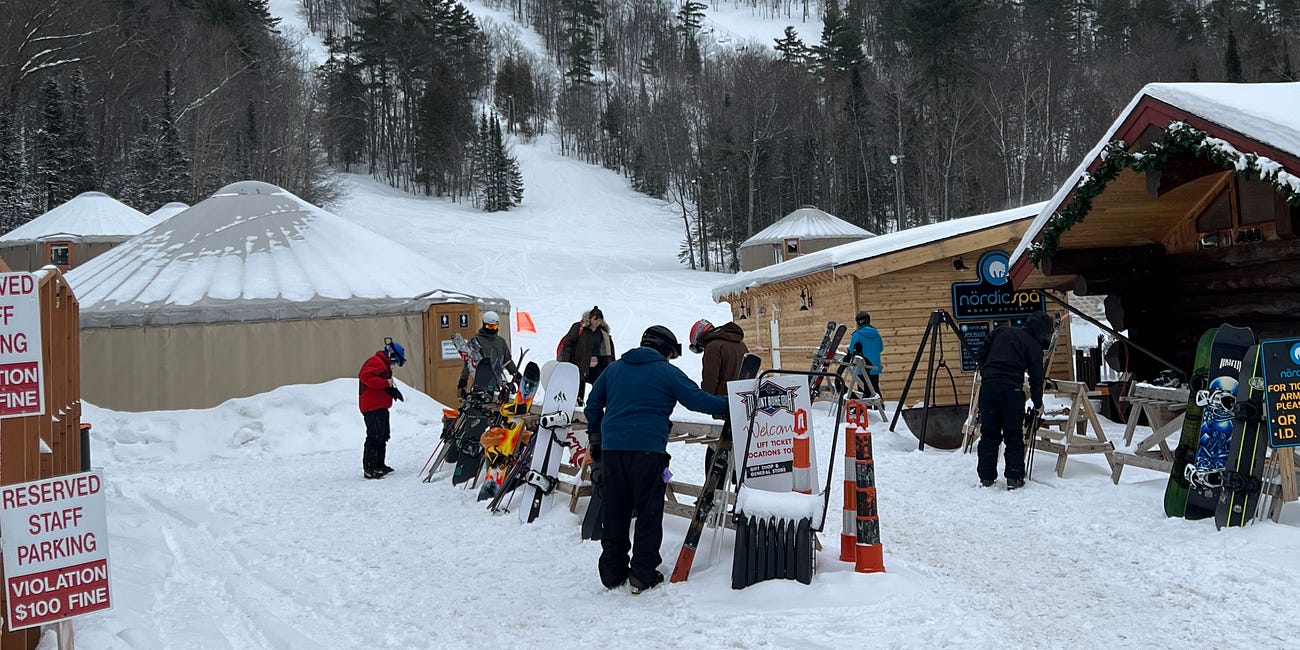
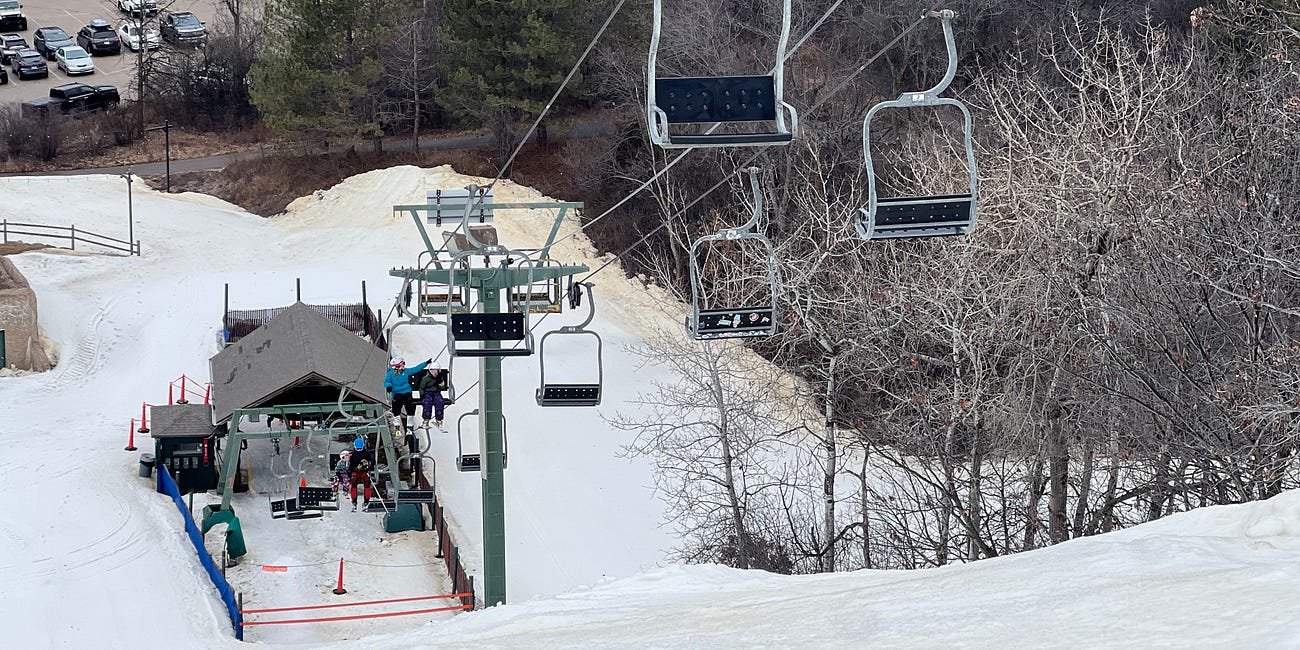



Stuart….SHHHHHHHH
The lodging at Panorama is super close to the runs, the condo we stayed at you could practically ski into the ski locker room. 10 steps. Priceless.
Other hidden gems in BC rarely mentioned are Big White (Indy Pass) and Sun Peaks (Ikon). Both have villages part way up the mountain adding a European feel and more snow than Pano. Easy place to spend 3-4 days w a family for the fraction of the cost of Vail/Breck. Tougher to get to (via either kelowna or Kamloops and an hour plus drive). Plenty of amazing terrain.
Revelstoke remains the gem, definitely the Jackson Hole of BC. Snow is very consistent, it’s not crowded, and there is seemingly endless tree-filled terrain. Just don’t expect snow at the base, as it’s usually not there.